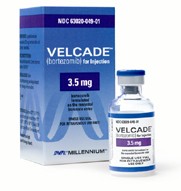
Recently Diagnosed or Relapsed? Stop Looking For a Miracle Cure, and Use Evidence-Based Therapies To Enhance Your Treatment and Prolong Your Remission
Multiple Myeloma an incurable disease, but I have spent the last 25 years in remission using a blend of conventional oncology and evidence-based nutrition, supplementation, and lifestyle therapies from peer-reviewed studies that your oncologist probably hasn't told you about.
Click the orange button to the right to learn more about what you can start doing today.
- You are here:
- Home »
- Blog »
- Multiple Myeloma »
- Salvage Therapy for Myeloma does not help Progressive Disease…
Salvage Therapy for Myeloma does not help Progressive Disease…
“For myeloma patients with progressive disease (PD) after induction therapy, deepening of response through salvage therapy is not associated with improved progression-free or overall survival..”
According to research, approximately 20-25% of newly diagnosed multiple myeloma (MM) patients do not respond to Bortezomib-based induction therapy. The usual therapy response, if the MM patient doesn’t respond to therapy, is to have the patient undergo salvage therapy.
According to the study linked below, the problem with salvage therapy is that more toxicity leads to more side effects yet salvage therapy does not lead to longer PFS or overall survival aka length of life.
In short, salvage therapy doesn’t help the myeloma patient who doesn’t respond to Velcade-based induction therapy and may hurt the patient.
At this point, I must go on record as stating that my induction therapy, VAD, (Vincristine, Adriamycin, dexamethasone) had about a 50% overall response rate when I underwent five courses of this triplet soon after my own MM diagnosis in 1994. According to my medical file, I reached stage 2B one month after I completed my fifth course of VAD therapy. My original diagnosis about a year and a half before, was pre-MM. I did not respond to my induction…
Newly diagnosed MM patients are much better off today than they were in the 1990’s.
What does a MM patient do when he/she does not respond to induction therapy? The article below raises the possibility that the MMer should go straight to having an autologous stem cell transplant.
And while that may make sense for the MMer who is relatively young and in relatively good health, an ASCT may not be an option for older newly diagnosed patients with co-morbidities.
Consider evidence-based integrative therapies. Consider non-toxic therapies that research has shown can enhance the efficacy of specific chemotherapy regimens while reducing the toxicity of those regimens.
Have you been diagnosed with multiple myeloma? Have you not responded to Bortezomib-based induction therapy? Scroll down the page, post a question or comment and I will reply to you ASAP.
To Learn More about Partial, Stable, Progressive Response to Myeloma Treatment- click now
Hang in there,
David Emerson
- MM Survivor
- MM Cancer Coach
- Director PeopleBeatingCancer
Recommended Reading:
- Multiple Myeloma Specialists- MM Cancer Coaching
- Multiple Myeloma- Newly Diagnosed Without Intent to ASCT
- MRD Negative Plus MDR Means No ASCT in Myeloma?
Salvage therapy
“Salvage therapy, also known as rescue therapy, is a form of therapy given after an ailment does not respond to standard therapy.[1] The most common diseases that require salvage therapy are HIV and various cancers. The term is not clearly defined; it is used both to mean a second attempt and a final attempt.[2] Salvage therapy drugs or drug combinations have, in general, much more severe side effects than the standard line of therapy. This is often true of a drug of last resort…”
Salvage therapy does not up survival for progressive myeloma
“For myeloma patients with progressive disease (PD) after induction therapy, deepening of response through salvage therapy is not associated with improved progression-free or overall survival, according to a study published online Aug. 19 in Leukemia & Lymphoma.
Joanna Blocka, M.D., from the University Hospital of Heidelberg in Germany, and colleagues performed a retrospective analysis of 1,599 myeloma patients treated between 1991 and 2016 to examine whether patients with PD after induction should receive salvage therapy or proceed directly to autologous stem cell transplantation (ASCT).
The researchers found that progression-free and overall survival did not improve with deepening of response through salvage therapy (hazard ratios [HRs], 0.71 [95 percent confidence interval (CI), 0.28 to 1.80; P = 0.5] and 0.77 [95 percent CI, 0.30 to 1.95; P = 0.6], respectively), neither with treatment with novel agents (HRs, 0.66 [95 percent CI, 0.23 to 1.85; P = 0.4] and 0.76 [95 percent CI, 0.27 to 2.15; P = 0.6], respectively) nor with older regimens (HRs, 0.86 [95 percent CI, 0.36 to 2.07; P = 0.7] and 0.80 [95 percent CI, 0.34 to 1.91; P = 0.6], respectively).
“Considering this finding, the question arises, whether induction therapy is of any use at all,” the authors write. “Although there is a general tendency to achieve a deep therapy response before ASCT, further analyses should be performed to answer this question.”



